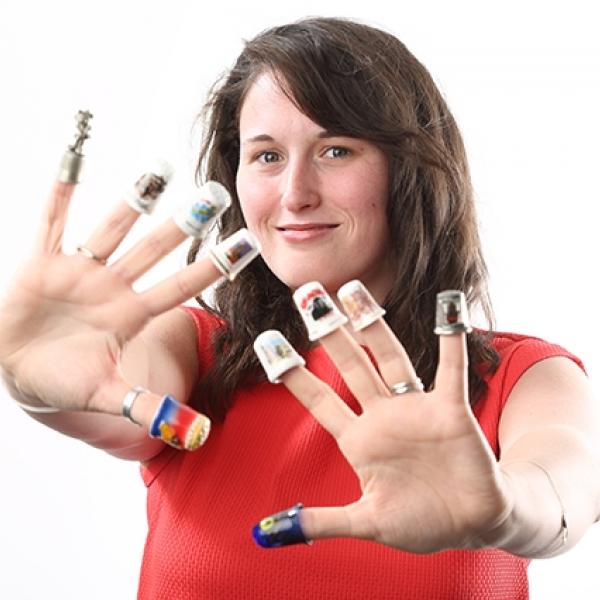At r//evolution, we have a pretty impressive portfolio of projects we have delivered for clients in the travel and tourism sector. Just one example is Visit Bradford – the destination marketing organisation for Bradford Metropolitan District Council. And while we strive to deliver real r//esults with our expert know-how in all things connected to the travel trade, we like to go the extra mile for our clients too – and this week was no exception.
Wednesday 28th January saw Visit Bradford host its very first Tourism Forum – a first of its kind event in the district, seeing businesses dealing with visitors to the region come together to find out more about what Visit Bradford is doing to attract people to the district, and in turn supporting local businesses.
Our PR Manager, Anne-Marie, works closely with the team at Visit Bradford to raise its profile to potential visitors, and so we were naturally delighted when the guys at VB invited her along to give a guest talk to the delegates on PR tricks of the trade – just the little things these businesses could be doing to help market themselves to potential customers.
Anne-Marie’s presentation went down a treat, so we thought we’d summarise it and share it here with you – after all, while these tricks of the trade are great for those working in travel and tourism, they can also be applied to any business, in any sector, with any message to communicate.
PR isn’t just media relations:
Lots of people think PR is synonymous with media coverage – this is not the case. PR is moving away from the publicity model and so now it’s much more about two-way communication between a business and its target audience. The aim is to gain a mutual understanding between the two parties: the target audience knows what it is the business has to offer (be it product, service etc.) and the business knows what the target audience wants and needs – here lies the mutual understanding and the golden opportunity.
PR isn’t always free:
There’s a misconception that PR is a ‘free’ alternative to media advertising. Again – this is not the case. Rather than thinking about PR in the general sense, think of the owned, earned and bought channels of communication a business can use to engage with its audience. For the observant – you’re right – one of these categories is called ‘bought’ and as you would expect, requires a bit of cash behind it…
Understand owned, earned and bought:
So what do we mean by owned, earned and bought channels of communication? It’s pretty simple really.
Owned refers to any channel of communication that a business physically owns and therefore has full control over. This could be a company website, corporate brochure, social media channels or digital newsletters. The point to this is that the business is creator, curator and chief editor; it has full control of its key messages communicated using these channels.
Unlike owned, earned refers to any channel of communication that a business has no control over, but can only influence, like the media (think – traditional media relations, publicity and old-school perceptions of PR). While these channels of communication are often viewed as being more credible by the a target audience – after all, it’s like third party endorsement having a journalist or blogger write about a business, rather than a company singing its praises through its owned communication channels – the ability to control what is said and how it’s said is minimal.
Lastly, bought refers to any opportunity to communicate with its target audience that has been purchased by a business. It could be an advertorial in a magazine or a suite of targeted adverts across a social media platform. Whatever it is, is certainly isn’t free, but it doesn’t mean it has to be expensive. If digital is your thing, you can often set a spend limit in advance – the ads run until you’ve spent your limit so you never go over budget. It’s a great way to test and tweak to make sure you’re hitting the right people, without a massive commitment to upfront capital.
Free your mind:
Because PR is so often associated with media coverage, you say ‘PR’ and people think it equals ‘newspapers’. Not so. When it comes to communicating across owned, earned and bought channels of communication, don’t just think about print – of course it’s part of the mix – but also consider digital (almost all printed newspapers have a website/digital version of the publication, blogs, and social media) and broadcast (of course there’s TV and radio, but what about your own – and therefore owned – podcasts or YouTube channel?).
The 3Rs:
Ultimately, however a business decides to raise its profile – whether it’s via owned, earned or bought communication channels - there are three things to consider before embarking on any type of campaign. Think:
- Am I targeting the right people;
- Am I targeting the right people and at the right time; and
- Am I targeting the right people, at the right time, and in the right way?
In other words, if you know who you want to speak with, where the opportunities lie to speak with these people, and how these people like to be communicated with (are they readers of the Times of followers on Twitter?), you’re on to a winner and have clearly mastered the basic tricks of the PR trade.



